Recent Books Archive
Books and Essays on Miller (2005–2017)
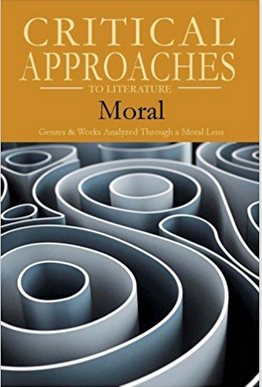 |
 |
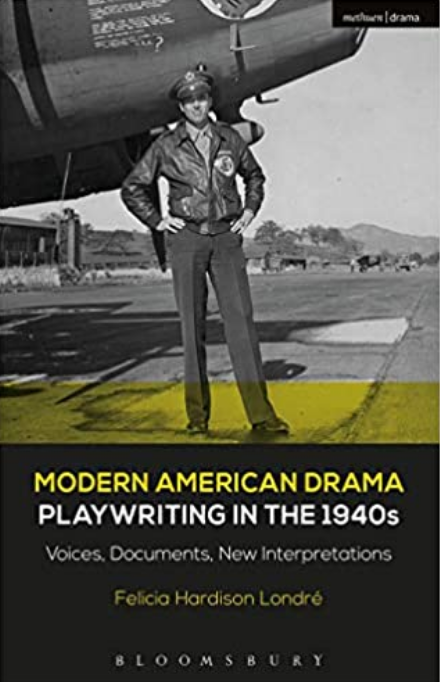 |
- Critical Approaches to Literature: Moral, edited by Robert Evans, Salem, 2017, has an essay by Susan C. W. Abbotson on Miller: “Arthur Miller as the Moral Voice of America,” pp. 181-96.
- Bootheina Majoul’s On Trauma and Traumatic Memory. Cambridge Scholars Publishing, 2017, has a section on The Crucible.
- Modern American Drama. Playwriting in the 1940s: Voices, Documents, New Interpretations by Felicia Hardison Londré (New York: Bloomsbury Academic, 2017) covers Miller’s 1940s work in detail, while Modern American Drama. Playwriting in the 1950s: Voices, Documents, New Interpretations by Susan C. W. Abbotson (New York: Bloomsbury Publishing, 2017), more briefly covers Miller’s 50s output.
- Richard Halpern’s Eclipse of Action: Tragedy and Political Economy, U of Chicago P, 2017, contains some references to Miller as it traces the long history of the ways in which economic thought and tragic drama interact.
- Arthur Miller’s Century: Essays Celebrating the 100th Birthday of America’s Great Playwright, edited by Stephen Marino. Cambridge Scholars Publishing, 2017. ISBN: 978-1-4438-8648-2. 18 all new essays by current leading scholars on Miller; covers territory both old (including Crucible and Salesman) and new (including Situation Normal…, Creation, Last Yankee and the collaborations with Inge Morath). An excellent collection that offers assessment of Miller’s stature and continuing relevance at his 100 mark.
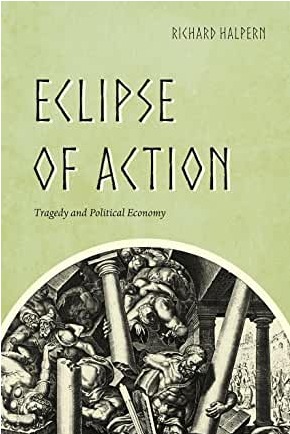
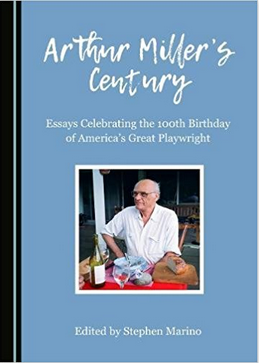
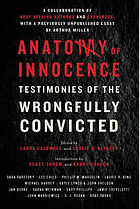
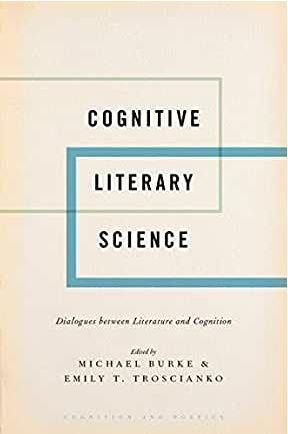
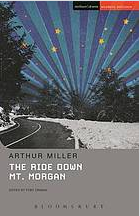
- Anatomy of Innocence: Testimonies of the Wrongfully Convicted, edited by Laura Caldwell and Leslie S. Klinger (New York, N.Y: Liveright Publishing, 2017) contains “Luck and the Death Penalty: Community Involvement: An Essay about Peter Reilly (Connecticut Exoneree)” by Arthur Miller.
- Patrick Colm Hogan has an essay, “Simulation and the Structure of Emotional Memory: Learning from Arthur Miller’s After the Fall.” In Cognitive Literary Science: Dialogues between Literature and Cognition, edited by Michael Burke and Emily Troscianko, Oxford UP, 2017.
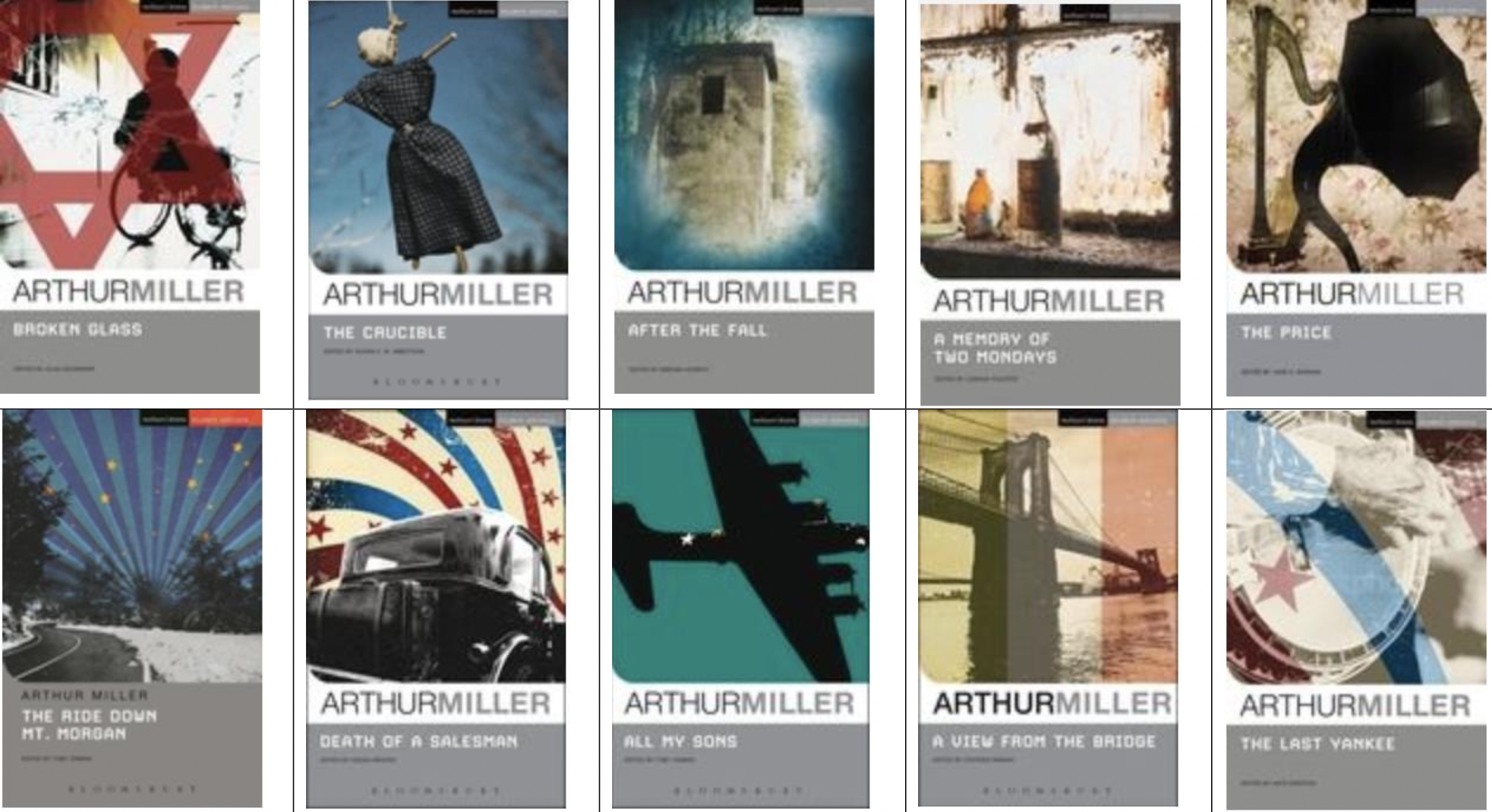
- The Methuen Drama Student Editions of Miller’s plays, approved by the Arthur Miller Estate, have added The Ride Down Mt. Morgan edited by Toby Zinman (2017). Each volume contains the play and in depth notes for that play by a different Miller scholar. Other volumes previously published are: The Crucible, Death of a Salesman, All My Sons, A View from the Bridge, The Price, A Memory of Two Mondays, Broken Glass, After the Fall, and The Last Yankee.
- Dail, Chrystyna. Stage for Action: U.S. Social Activist Theatre in the 1940s. Carbondale, IL: Southern Illinois University Press, 2016. Contains details of Miller’s early involvement with Stage for Action.
- Otten, Terry. “Broken Glass: Fifty Years Forward to the Past.” Modern Drama 59.3 (Fall 2016): 327-342. (links the play to Ibsen’s Ghosts)

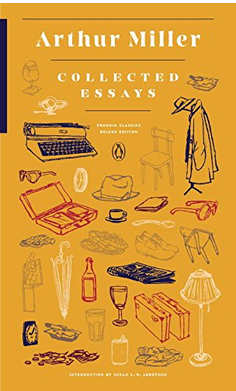



- Collected Essays: Arthur Miller (Penguin, 2016), edited by Susan C. W. Abbotson, in which selected essays have been grouped into subject areas that include general discussions of the theater (including tragedy), specific plays, and ones relating to specific socio-political concerns at home and abroad.
- Joshua Polster’s Stages of Engagement: US Theatre and Performance 1898-1949 (Routledge, 2016) contains extensive discussions of The Crucible and Death of a Salesman.
- Valerie Barnes Lipscomb’s Performing Age in Modern Drama (New York : Palgrave Macmillan, 2016) contains some discussion of Miller’s plays.
- Marguerite Chabrol’s De Broadway à Hollywood: Stratégies d’Importation du Théâtre New-Yorkais dans le Cinéma Classique Américain (Paris: CNRS, 2016). Discusses plays by O’Neill, Williams and Miller that have been turned into film. (French)
- Aziz, Aamir. “Using the Past to Intervene in the Present: Spectacular Framing in Arthur Miller’s The Crucible.” New Theatre Quarterly 32.2 (May 2016): 169-180.
- Arthur Miller’s student play No Villain is available in print (London: Josef Weinberger, 2016). Now also in the US, from Dramatic Play Services, 2017.
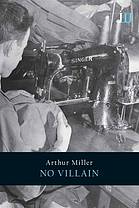 |
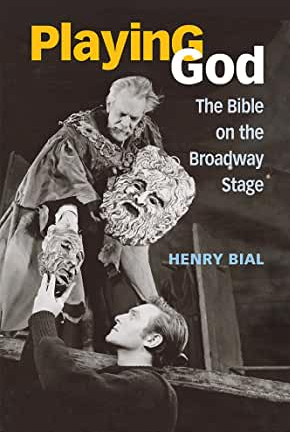 |
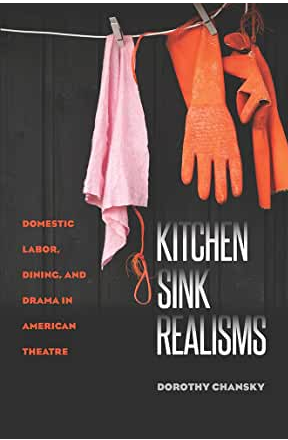 |
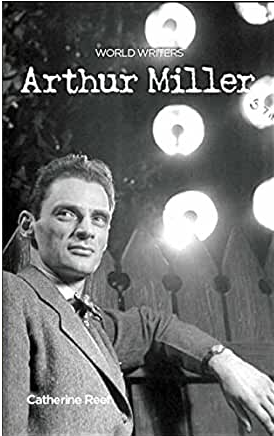 |
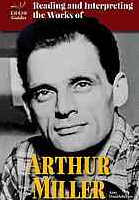 |
- Henry Bial’s Playing God: The Bible of the Broadway Stage (Ann Arbor: U of Michigan P, 2015). Contains discussion of The Creation of the World and Other Business, and offers an interesting assessment of why the play was so poorly received.
- Dorothy Chansky’s Kitchen Sink Realisms: Domestic Labor, Dining, and Drama in American Theatre (University of Iowa Press, 2015). As part of their Studies in Theatre History and Culture series. Includes discussion of Death of a Salesman.
- Two new juvenile guides: Amy Dunkleberger’s Reading and interpreting the works of Arthur Miller (New York, NY: Enslow Publishing, 2016), and (Greensboro, North Carolina: Morgan Reynolds Publishing, 2015). This has the following chapters: Changing fortunes –A new shadow –Wanting something more –The artist’s soul –A tragedy set in Brooklyn –Common vengeance –The lowest point –“Flesh of the playwright’s flesh” –One humanity –Miller’s gift.
- In 2015, Dover reprinted in paperback the long out of print children’s book that Miller wrote in 1963: Jane’s Blanket. They include the original Al Parker illustrations. (In 1972 the original was reissued with new illustrations by Emily McCully.)
- Edited by Miriam López-Rodríguez, Inmaculada Pineda-Hernández and Alfonso Ceballos Muñoz, Old Stories, New Readings: The Transforming Power of American Drama (Newcastle upon Tyne, UK : Cambridge Scholars Publishing, 2015), contains an essay by Christiane Desafy-Grignard titled: “Arthur Miller’s Plays Seen from a Feminist Perspective: Was Miller Sexist?”
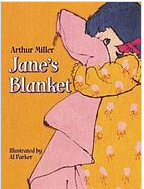



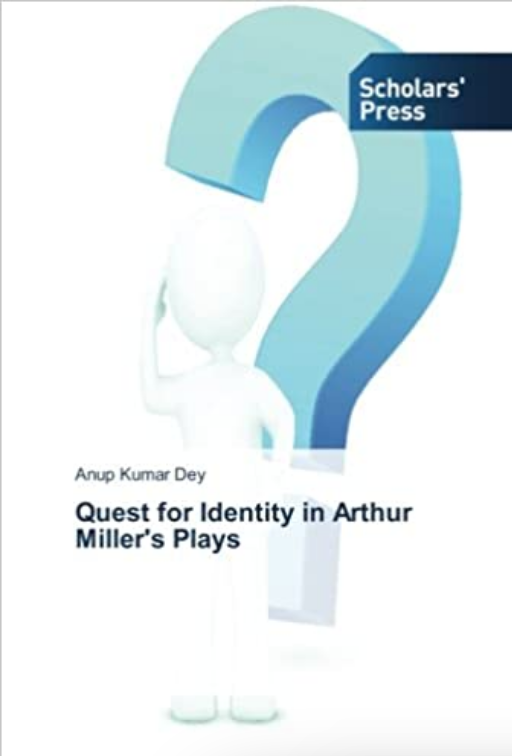
- Allan H Ryskind’s Hollywood Traitors: Blacklisted Screenwriters: Agents of Stalin, Allies of Hitler (Washington, DC : Regnery History, 2015), contains the chapter: “Arthur Miller: Was He or Wasn’t He?”
- Woman on Trial: Gender and the Accused Woman in Plays from Ancient Greece to the Contemporary Stage, edited by Amelia Howe Kritzer and Miriam López-Rodríguez (Amherst, New York: Teneo Press, 2015), contains Amelia Howe Kritzer’s essay: “Witchcraft Trials in Arthur Miller’s The Crucible and Caryl Churchill’s Vinegar Tom.”
- Two guides in German for Miller’s best known plays by Dorothée Leidig: Textanalyse und Interpretation zu Arthur Miller, Death of a Salesman, (Hollfeld: Bange, 2015), pp. 111, and Textanalyse und Interpretation zu Arthur Miller, The Crucible, pp. 109 (Hollfeld: Bange, 2016), pp.111.
- Anup Kumar Dey, Quest for Identity in Arthur Miller’s Plays. Scholar’s Press, 2015.
- Whose reality? by Lewis Mitchell and Olivia Jamieson. Study notes and a workshop approach to Michael Leunig’s The Lot: In Words, Barry Levinson’s Wag the Dog, J.M. Coetzee’s Foe, Arthur Miller’s Death of a Salesman. 2015.


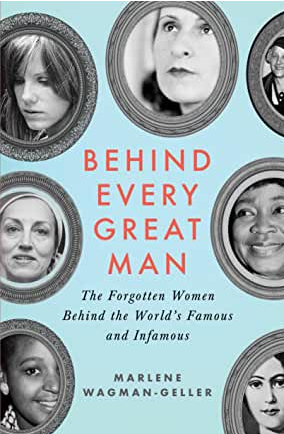

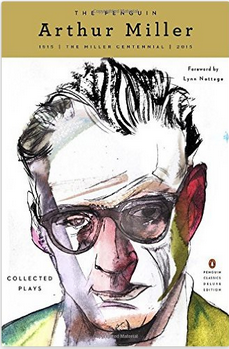
- A new Centennial edition of Arthur Miller’s Collected Plays edited by Lynn Nottage, from Penguin, October 2015. Contains 18 major full-length plays from The Man Who Had All the Luck to Resurrection Blues. Paperback. Penguin have also reissued most of Miller’s plays in single volumes with newly designed covers.
- Emily Bosco’s The Crucible. Student Book (Strathfield: Into English, 2015).
- Matthew Roudané has edited The Collected Essays of Arthur Miller London: Bloomsbury Methuen, 2015 (an amalgamation of all of the essays from Theater Essays and Echoes Down the Corridor organized chronologically with a new introduction).
- Marlene Wagman-Geller’s Behind Every Great Man: The Forgotten Women Behind the World’s Famous and Infamous (Naperville, Illinois: Sourcebooks, 2015) covers Miller’s depiction of Marilyn in After the Fall.
- A new edition of Miller’s Death of a Salesman in Beijing: Arthur Miller, edited with an introduction by Claire Conceison for Bloomsbury in London, 2015.
- Toby Zinman’s Replay: Classic Modern Drama Reimagined (New York : Bloomsbury Methuen Drama, 2015) looks at different stage versions of Salesman.
- Palmer, David. “Three Ways to Fail at Forgiveness: Beckett, Miller, and O’Neill.” Eugene O’Neill Review 36.2 (2015): 115-149.

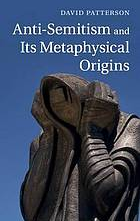
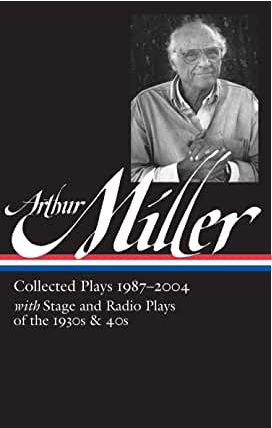
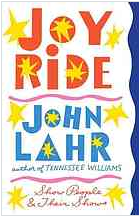
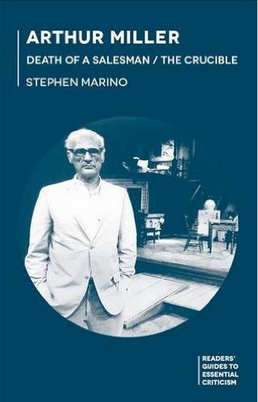
- Woo, Miseong. “The Antiheroic Protagonists in Modern Drama: Leo Tolstoy’s Influence on Arthur Miller.” Journal of Modern English Drama, 28.2 (Aug. 2015): 165-194.
- Collins, Holly. “Towards a ‘Brave New World’: Tracing the Emergence of Creolization in Maryse Condé’s Canonical Rewritings.” Women in French Studies 23 (2015): 69-84.
- John Lahr’s Joy Ride: Show People and their Shows (New York: W.W. Norton, 2015) includes comments on Miller.
- Quinlan, Kieran. “Being Willy Loman” Chronicle of Higher Education 29 (May 2015): 61
- Caplan, Debra. “’Attention Must Be Paid’: Death of a Salesman‘s Counter-Adapted Yiddish Homecoming.” Modern Drama 58.2 (Summer 2015): 194-217. (discusses the 1951 Yiddish production by Buloff in depth)
- David Patterson’s Anti-Semitism and its Metaphysical Origins (New York, NY: Cambridge University Press, 2015) has a chapter: “Sounding the Depths of the Anti-Semitic Soul: Arthur Miller’s Focus.”
- The third volume of the Library of America series edited by Tony Kushner: Arthur Miller: Collected Plays 1987-2004: (Library of America #261) from April 2015: from Danger: Memory (1987) to Finishing the Picture (2004). It includes The Ride Down Mt. Morgan, The Last Yankee, Broken Glass, Mr. Peters’ Connections, and Resurrection Blues. Also The Golden Years, several shorter one-act plays and never-before-published early works and radio plays; and a selection of Miller’s prose reflections on his art, including: “On Screenwriting and Language” and “About Theatre Language.” Hardback. You can now also buy the three volume set.
- Stephen Marino, Arthur Miller’s Death of a Salesman / The Crucible: A Reader’s Guide to Essential Criticism, Macmillan/Palgrave, 2015. An invaluable guide to past and current scholarship on these two seminal plays.
 |
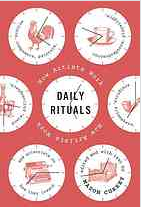 |
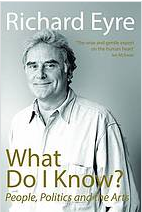 |
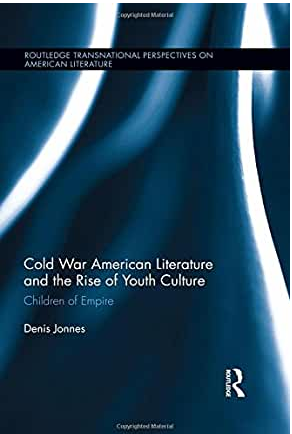 |
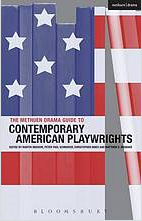 |
- Denis Jonnes’ Cold War American Literature and the Rise of Youth Culture: Children of Empire (New York; London: Taylor & Francis, 2014) has a chapter: “Generation on Trial: Arthur Miller’s Theater of Judgment.”
- Mason Currey’s Daily Rituals: How Artists Work (New York: Alfred A. Knopf, 2013), contains a chapter on Miller.
- Andrew Sofer. Dark Matter: Invisibility in Drama, Theatre and Performance. Ann Arbor: U of Michigan P, 2013, has a full chapter on Miller (chapter 5), concentrating on The Archbishop’s Ceiling, mapping the changes in Miller’s philosophy from Ibsenian morality (in After the Fall) to Foucaultian issues of power in the later play.
- Kevin Riordan, “Salesman in Abu Dhabi: The Geopathology of Objects.” Modern Drama 57.3 (2014): 409-32. Interesting article that analyzes a production of Salesman in which certain characters are replaced by inanimate objects, such as Charlie by a rolling refrigerator door; The Woman, a table fan; and Happy a black punching bag on a movable frame!
- The Methuen Drama Guide to Contemporary American Playwrights, edited by Martin Middeke, Peter Paul Schnierer, Christopher Innes, and Matthew Roudané (New York : Bloomsbury Methuen Drama, 2014), contains a chapter on “Arthur Miller” written by Susan C. W. Abbotson.
- 吾文泉. “阿瑟·密勒戏剧的犹太写作” (Arthur Miller Plays Jewish Writing) Foreign Literature Studies/Wai Guo Wen Xue Yan Jiu, 36.2 (Apr. 2014): 66-72 (about Miller’s treatment of Jewish identity)
- Richard Eyre’s What do I know?: People, Politics and the ArtsLondon : Nick Hern Books, 2014). Includes Arthur Miller recounting to Eyre the events of the first night of Death of a Salesman.
- Robert J Andreach’s Tragedy in the Contemporary American Theatre (Lanham, MD; Toronto; Plymouth, UK: University Press of America, 2014). This book examines plays by contemporary playwrights and compares them alongside the works of Eugene O’Neill, Arthur Miller, and Tennessee Williams. Andreach argues that tragedy is not only present in contemporary American theatre, but issues from an expectation fundamental to American culture: the pressure on characters to create themselves.
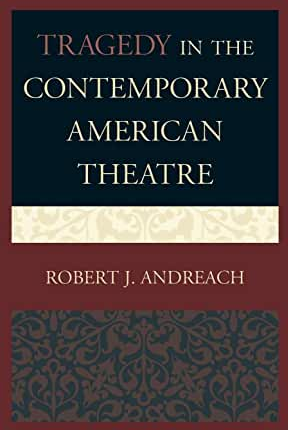




- Is It ‘Cause It’s Cool? Affective Encounters with American Culture, edited by Astrid M. Fellner, Susanne Hamscha, Klaus Heissenberger, and Jennifer J. Moos (Vienna, Austria: LIT; 2014). Contains the essay: “Emotional Capitalism, Transnationalism, and the Survival of a Salesman” by Leopold Lippert, pp. 255-71.
- The Oxford Handbook of American Drama, edited by Jeffrey H. Richards and Heather S. Nathans (New York : Oxford University Press, 2014) contains an essay by Jeffrey D. Mason: “Arthur Miller: A Radical Politics of the Soul.”
- Devers, Rebecca. “’You Don’t Prepare Breakfast … You Launch It Like a Missile’: The Cold War Kitchen and Technology’s Displacement of the Home.” Americana: The Journal of American Popular Culture (1900-Present) 13.1 (1 March , 2014). Focused on Salesman.
- Ramon Espejo Romero’s Re-thinking Critical Paradigms on Arthur Miller: Resurrection Blues and the Postmodern (London : Goldsmiths University of London, 2014). Goldsmiths Performance Research pamphlets, no. 4.
- Donald Dewey’s Lee J. Cobb. The Life of an Actor (Blue Ridge Summit : Scarecrow Press, 2014), has a chapter on his portrayal of Willy as well as a picture of this landmark role on the book’s cover.
- Edward W. Younkins’ Exploring Capitalist Fiction: Business through Literature and Film (Lanham, MD: Lexington Books, 2014), contains a chapter: “Arthur Miller’s Death of a Salesman: A Case of Self-Delusion.”
- Yoon, Hee-uhk. “A Study of Arthur Miller’s All My Sons through Levinas’s Philosophy of Otherness: The Violence of the Same and the Forgetting of the Other.” Journal of Modern English Drama 27.3 (Dec. 2014): 279-302.
- Roszak, Suzanne. “Salem Rewritten Again: Arthur Miller, Maryse Condé, and Appropriating the Bildungsroman.” Comparative Literature 66.1 (Winter 2014): 113-126.
- Leonard Orr’s Holocaust Literature An Introduction (Continuum Publishing Corporation, 2014), contains discussion of Miller pieces.
- Clapp, Jeffrey. “From Signing to Strangling: Arthur Miller and the National Security State.” Textual Practice 28.3 (May 2014): 365-384. (discusses Crucible and After the Fall).
- Kolt, Robert. “The Devil Made Me Do It! History to Play to Opera: Media Transformation in Arthur Miller’s The Crucible.” Hungarian Journal of English and American Studies 20.1 (Spring 2014): 55-76.

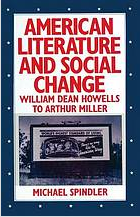
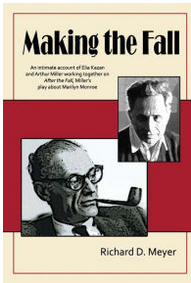
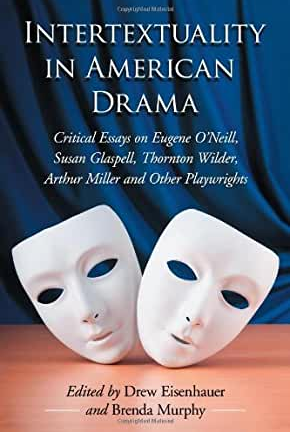
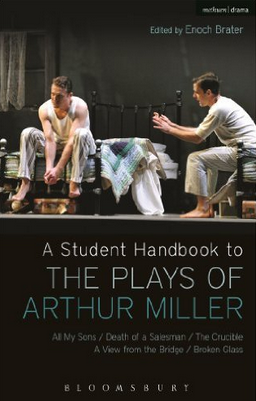
- Samantaray, Swati. “Dystopia: A Critique of Arthur Miller’s Death of a Salesman.” New Academia: An International Journal of English Language Literature and Literary Theory 3.1 (Jan. 2014): 1-5.
- Michael Spindler’s 1983 book from Indiana UP, American Literature and Social Change: William Dean Howells to Arthur Miller, has been reprinted by Palgrave Macmillan, 2014.
- Aiello, Francisco. “Moi, Tituba de Maryse Condé: Reescribir la Literatura de los Hombres.” Celehis: Revista del Centro de Letras Hispanoamericanas 28 (2014): 11-29. (touches on The Crucible)
- Richard D. Meyer. Making the Fall. CreateSpace Independent Publishing Platform, 2013. With the permission of Kazan, Meyer spent a sabbatical recording what went on during the first year of the Lincoln Repertory Theater. Included are verbatim conversations between Miller, Kazan, and the cast of their first production: After the Fall. The book also includes never-before-published excerpts from Kazan’s personal notes and letters.
- Intertextuality in American Drama: Critical Essays on Eugene O’Neill, Susan Glaspell, Thonton Wilder, Arthur Miller and Other Playwrights. Eds. Drew Eisenhauer and Brenda Murphy. North Carolina and London: MacFarland, 2013. Contains two new essays on Miller.
- A Student Handbook to the Plays of Arthur Miller: All My Sons, Death of a Salesman, The Crucible, A View from the Bridge, Broken Glass. Ed. Enoch Brater. London: Methuen, Nov. 2013 This contains notes created for the title plays by an assortment of leading Miller scholars, but not the plays themselves.
- Timebends: A Life. Miller’s wonderful 1978 autobiography was reissued by Grove Press in 2013 as both a paperback and in a Kindle edition.
- Mason Currey’s Daily Rituals: How Artists Work (New York: Alfred A. Knopf, 2013), contains a chapter on Miller.
- Barry Paris, ed. Stella Adler On America’s Master Playwrights. New York: Vintage, 2012. Contains two chapters on Miller: Death of a Salesman (325-337) and After the Fall (338-356).
- Arthur Miller features in Peter Dreier’s The 100 Greatest Americans of the 20th Century: A Social Justice Hall of Fame (Nation Books, 2012). In honor of the centenary, Huffington Post printed his commentary on Miller (while sympathetic to Miller, not all of the details given are entirely accurate).
- Brenda Murphy’s edited collection, Arthur Miller: Critical Insights for Salem Press,
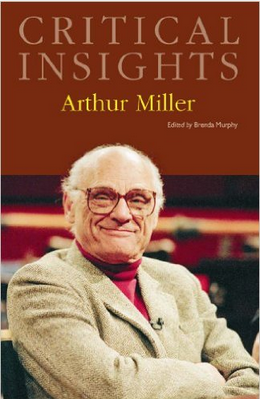 2010, contains an excellent selection of new and reprinted essays on Miller’s work, including: “On Arthur Miller” / Brenda Murphy — “Biography of Arthur Miller” / Carl Rollyson and Victoria Price — “The Paris Review Perspective” / Richard Beck for The Paris Review — “Best Intentions Far Awry: The Family Dynamic in Miller’s All My Sons and Death of a Salesman” / Pamela Loos — “‘It’s all about the language’: Arthur Miller’s Poetic Dialogue” / Stephen A. Marino — “The freedom of Others: Arthur Miller’s Social and Political Context” / Katherine Egerton — “The Critical Reception of Arthur Miller’s Work” / Jane K. Dominik — “Arthur Miller and the Art of the Possible” / Steven R. Centola — “Arthur Miller: Un-American” / Christopher Bigsby — “All My Sons and Paternal Authority” / James A. Robinson — “‘There’s no place like home’: Miller’s ‘Poem,’ Frost’s ‘Play'” / George Monteiro — “Asking ‘Queer Questions,’ Revealing Ugly Truths: Giles Corey’s Subversive Eccentricity in The Crucible” / J. Chris Westgate — “Verse, Figurative Language, and Myth in A View from the Bridge” / Stephen A. Marino — “Uneasy Collaboration: Miller, Kazan, and After the Fall” / Brenda Murphy — All About Talk: Arthur Miller’s The Price / Gerald Weales — Both His Sons: Arthur Miller’s The Price and Jewish Assimilation” / James A. Robinson — “The ‘line to measure from’: Arthur Miller’s The American Clock as a Lesson for the Ages” / Susan C. W. Abbotson — “Coming to Roost Again: Tragic Rhythm in Arthur Miller’s Broken Glass” / Terry Otten — “Arthur Miller’s Ironic Resurrection” / Jeffrey D. Mason — “The Fiction of Arthur Miller” / Laurence Goldstein.
2010, contains an excellent selection of new and reprinted essays on Miller’s work, including: “On Arthur Miller” / Brenda Murphy — “Biography of Arthur Miller” / Carl Rollyson and Victoria Price — “The Paris Review Perspective” / Richard Beck for The Paris Review — “Best Intentions Far Awry: The Family Dynamic in Miller’s All My Sons and Death of a Salesman” / Pamela Loos — “‘It’s all about the language’: Arthur Miller’s Poetic Dialogue” / Stephen A. Marino — “The freedom of Others: Arthur Miller’s Social and Political Context” / Katherine Egerton — “The Critical Reception of Arthur Miller’s Work” / Jane K. Dominik — “Arthur Miller and the Art of the Possible” / Steven R. Centola — “Arthur Miller: Un-American” / Christopher Bigsby — “All My Sons and Paternal Authority” / James A. Robinson — “‘There’s no place like home’: Miller’s ‘Poem,’ Frost’s ‘Play'” / George Monteiro — “Asking ‘Queer Questions,’ Revealing Ugly Truths: Giles Corey’s Subversive Eccentricity in The Crucible” / J. Chris Westgate — “Verse, Figurative Language, and Myth in A View from the Bridge” / Stephen A. Marino — “Uneasy Collaboration: Miller, Kazan, and After the Fall” / Brenda Murphy — All About Talk: Arthur Miller’s The Price / Gerald Weales — Both His Sons: Arthur Miller’s The Price and Jewish Assimilation” / James A. Robinson — “The ‘line to measure from’: Arthur Miller’s The American Clock as a Lesson for the Ages” / Susan C. W. Abbotson — “Coming to Roost Again: Tragic Rhythm in Arthur Miller’s Broken Glass” / Terry Otten — “Arthur Miller’s Ironic Resurrection” / Jeffrey D. Mason — “The Fiction of Arthur Miller” / Laurence Goldstein.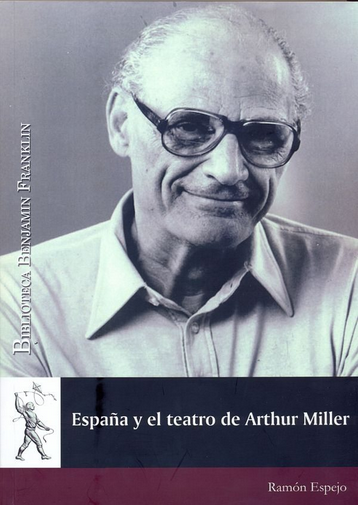
- Ramón Espejo’s España y el teatro de Arthur Miller. Alcalá de Henares: Instituto Franklin, 2010. Offers analysis of Miller’s reception in Spain, including a comprehensive survey of major Spanish productions of his plays since 1951 through 2009.
- Review from the British release of Christopher Bigsby’s long awaited Arthur Miller: The Definitive Biography Vol. 2 (1962-2005). Here is another review, this one from Gregory Mosher.
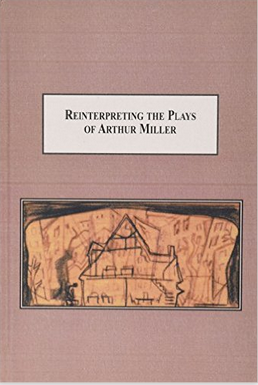
- Joshua E. Polster’s Reinterpreting the Plays of Arthur Miller. Lewiston, NY: Mellen, 2010. Using cultural semiotics and new historicism, Polster offers compelling insights into some of Miller’s seminal plays: All My Sons, Death of a Salesman, The Crucible, and Incident at Vichy. Check the publisher’s website for more details.
- Jim Fisher’s Miller in an Hour. New York: Smith and Kraus, 2010. Brief guide to the dramatist designed as a quick reference for directors, actors and dramaturges, as part of the presses new series: “Playwrights in an Hour.” (112 pages). Aimed at those who know very little about Miller.
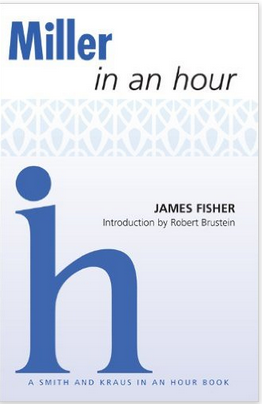
- Methuen Drama Student Editions of most of Miller’s plays, approved by the Arthur Miller Estate, edited by Enoch Brater. Each volume contains the play and in depth notes for that play newly written, each by a different Miller scholar. So far the series contains: The Crucible, Death of a Salesman, All My Sons, A View from the Bridge, The Price, A Memory of Two Mondays, Broken Glass, After the Fall, and The Last Yankee.
- In the new (2009) Methuen collected editions of Miller’s Plays, the sixth volume now contains: Broken Glass, Mr Peters’ Connections, Resurrection Blues, and Finishing the Picture. Just in case you are looking for a print version of Miller’s final play.

- Julius Novick’s Beyond the Golden Door: Jewish American Drama and Jewish American Experience. New York: Palgrave Macmillan, 2009, contains a lengthy chapter “Arthur Miller and the Jews,” that centers on Death of a Salesman, but also references After the Fall, The Price and Broken Glass.
- Robert Paul Kolt, Robert Ward’s The Crucible: Creating an American Musical Nationalism. Lanham, Md.: Scarecrow Press, 2009.
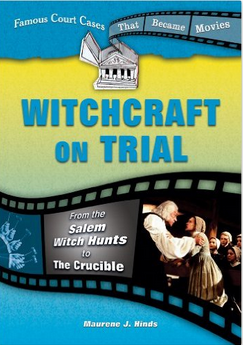
- Maurene J. Hinds, Witchcraft on Trial: From the Salem Witch Hunts to The Crucible. Berkeley Heights, NJ : Enslow, 2009. A junior guide to events/issues.
- Jeffrey Meyers, The Genius And The Goddess. New York: Hutchinson, 2009. A depiction of Miller and Monroe’s marriage.
- Jeffrey Mason, Stone Tower: The Political Theater of Arthur Miller. Ann Arbor: U of Michigan Press, 2008.

- Eric Sterling Ed. Arthur Miller’s Death of a Salesman (Dialogue). Rodophi, 2008. Essays on this seminal play.
- Masahiro Oikawa. Arthur Miller Gekini Okeru Rinrisei (Morality in Arthur Miller’s Plays). Kinseido, Tokyo, 2008. Sadly only available in Japanese, this volume discusses how such themes as the Great Depression and survival, the American Dream and dreams of success, McCarthyism and the Red Purge, anti-Semitism and the Holocaust, Original Sin, and responsibility for society are connected with his ideas on morality as repeated in his own essays and interviews.
- Christopher Bigsby’s Arthur Miller: The Definitive Biography, became available in the US (from May 2009)– it came out first in the UK in November 2008 to very positive feedback. Here are links to two of its early reviews: Times, Guardian.

- Neil Carson has updated his 1982 book on Miller to bring it up to Finishing the Picture, Arthur Miller: New York: Palgrave Macmillan, 2008.
- Greenhaven Press’ “Social Issues in Literature” series has two recent books relating to Miller:
— Justice in Arthur Miller’s The Crucible edited by Claudia D Johnson. Detroit: Greenhaven, 2009
— Suicide in Arthur Miller’s The Death of a Salesman edited by Alicia Cafferty Lerner and Adrienne Wilmoth Lerner. Detroit: Greenhaven, 2008.
Contents of the latter: Background on Arthur Miller. The Life and Career of Arthur Miller / Stephen A. Marino ; An Overview of Death of a Salesman / L.M. Domina ; Miller and Others Comment on the impact of Death of a Salesman / Arthur Miller, Robert Falls, and Brian Dennehy; Interviewed by Paul Solman — Suicide and Death of a Salesman. Willy Loman as a Tragic Hero / Robert A. Martin; Willy Loman is Dying Throughout the Play / Harold Bloom ; The Ambiguity of Biff’s Feelings for Willy / H.C. Phelps; Many Factors Led to Willy’s Suicide / Sighle Kennedy; Willy Loman had the Wrong Dreams / Joseph L. Badaracco, Jr.; Willy Loman is Undone by the American Dream / Thomas E. Porter; Alienation from His Work Drives Willy Loman to Suicide / Paul Blumberg; Miller Uses Objects to Convey Failure and Other Themes / Marianne Boruch; Death of a Salesman in China / Arthur Miller; A Student Responds Emotionally to Death of a Salesman / Meredith Kopald–Contemporary Perspectives on Suicide. Suicide Rates Rise across the Globe / The Economist; A Documentary about Suicide Sparks Debate / Killian Fox; The Ethics of Physician-assisted Suicide / Renske Heddema; Involvement Therapy Helps Suicide Survivors Cope / Bob Condor; Raising Awareness of Elder Suicide / Ezra Ochshorn.
Brian Dennehy; Interviewed by Paul Solman — Suicide and Death of a Salesman. Willy Loman as a Tragic Hero / Robert A. Martin; Willy Loman is Dying Throughout the Play / Harold Bloom ; The Ambiguity of Biff’s Feelings for Willy / H.C. Phelps; Many Factors Led to Willy’s Suicide / Sighle Kennedy; Willy Loman had the Wrong Dreams / Joseph L. Badaracco, Jr.; Willy Loman is Undone by the American Dream / Thomas E. Porter; Alienation from His Work Drives Willy Loman to Suicide / Paul Blumberg; Miller Uses Objects to Convey Failure and Other Themes / Marianne Boruch; Death of a Salesman in China / Arthur Miller; A Student Responds Emotionally to Death of a Salesman / Meredith Kopald–Contemporary Perspectives on Suicide. Suicide Rates Rise across the Globe / The Economist; A Documentary about Suicide Sparks Debate / Killian Fox; The Ethics of Physician-assisted Suicide / Renske Heddema; Involvement Therapy Helps Suicide Survivors Cope / Bob Condor; Raising Awareness of Elder Suicide / Ezra Ochshorn.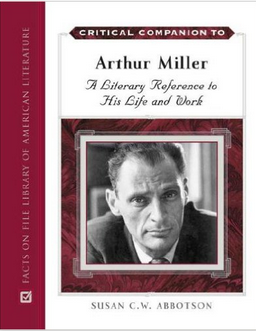
- Susan C. W. Abbotson, A Critical Companion to Arthur Miller, New York: Facts on File, 2007–your one-stop encyclopedia on all things Miller! Entries on all of Miller’s drama, fiction, and much of his non-fiction, as well as guides to themes, people and places with whom/which Miller can be connected.
- Silima Nanda’s Faces of Miller Women, was published in New Delhi, India : Mittal Publications, 2007 (try D. K. Agencies to get a copy: www.dkagencies.com).
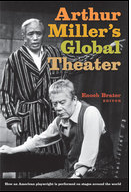
- Enoch Brater Ed. Arthur Miller’s Global Theater. Ann Arbor: U of Michigan Press, 2007. Collection of new essays.
- Harold Bloom has been busy putting out several collections of essays he has culled from a variety of sources (most of these essays have been printed elsewhere, but are handily collected here in these one-stop sources)—some are earlier editions that have been updated or expanded. Of interest to Miller scholars might be the following:
—Arthur Miller. Philadelphia: Chelsea House, 2003. Contents: Introduction / Harold Bloom — Biography of Arthur Miller / Cookie Lommel — Arthur Miller : An Introduction / Neil Heims — The Action and its Significance : Arthur Miller’s Struggle with Dramatic Form / Orm Overland — Miller and Things / Marianne Boruch — From Honors at Dawn to Death of a Salesman : Marxism and the Early Plays of Arthur Miller / Helge Normann Nilsen.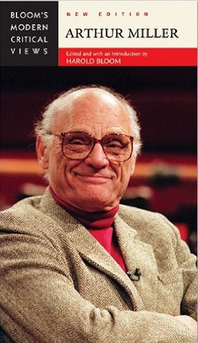
—Arthur Miller. New York : Bloom’s Literary Criticism, 2007. Contents: Arthur Miller’s The Crucible and the Salem Witch Trials: A Historian’s View / Edward S. Morgan — The Wooster Group, Arthur Miller, and The Crucible / David Savran — All My Sons and Paternal Authority / James A. Robinson — Unsafe Convictions: Unhappy Confessions in The Crucible / Valerie Lowe — Death of a Salesman and American Leadership: Life Imitates Art / John S. Shockley — Issues of Identity in Broken Glass: A Humanist Response to a Postmodern World / Susan C.W. Abbotson — Personality Wins the Day: Death of a Salesman and Popular Sales Advice Literature / Brenda Murphy — A Portrait of Arthur Miller / Jeffrey Meyers — Death of a Salesman vs. Columbia Pictures: the Strange Case of Career of a Salesman / Kevin Kerrane — Finishing the Picture: Arthur Miller, 1915-2005 / Laurence Goldstein — Miller’s Tale: The Playwright Drew a Line between Reaching Out and Selling Out / Wendy Smith — Arthur Miller and the Art of the Possible / Steven R. Centola.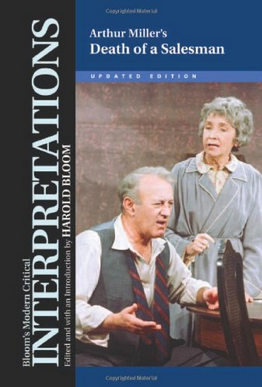
—Arthur Miller’s Death of a Salesman. New York : Chelsea House Publishers, 2007.Contents: Memory: Miller / Peter Szondi — Rhythm between Fathers and Sons: Death of a Salesman / Leah Hadomi — Family Values in Death of a Salesman / Steven R. Centola — The Crisis of Authenticity : Death of a Salesman and the Tragic Muse / Stephen Barker — Arthur Miller: Poet / Christopher Bigsby —“Death of a Salesman at Fifty: An Interview with Arthur Miller” / Colby H. Kullman — Miller’s Poetic Use of Demotic English in Death of a Salesman / Frank Ardolino — Death of a Salesman at Fifty: Still “coming home to roost” / Terry Otten — Shame, Guilt, Empathy, and the Search for Identity in Arthur Miller’s Death of a Salesman / Fred Ribkoff — Setting the Scene : Death of a Salesman and After the Fall / Austin E. Quigley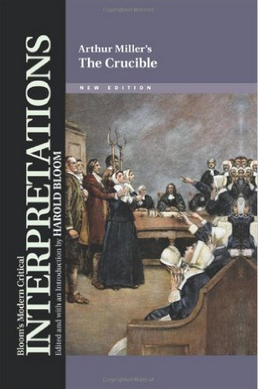
–Arthur Miller’s The Crucible. New York : Bloom’s Literary Criticism, 2008. Contents: Introduction / Harold Bloom — The Crucible / Edward Murray — History and Other Spectres in Arthur Miller’s The Crucible / E. Miller Budick — Arthur Miller’s The Crucible and the Salem WTrials: A Historian’s View / Edmund S. Morgan — Re(dis)covering the Witches in Arthur Miller’s The Crucible: A Feminist Reading / Wendy Schissel — Conscience and Community in An Enemy of the People and The Crucible / Thomas P. Adler — The Crucible in history / Arthur Miller — The Crucible to A Memory of Two Mondays / Terry Otten — Interrogating The Crucible: Revisiting the Biographical, Historical and Political Sources in Arthur Miller’s Play / Stuart Marlow — Poetry and Politics in / Stephen A. Marino — ‘The Crucible The Crucible’ / Christopher Bigsby.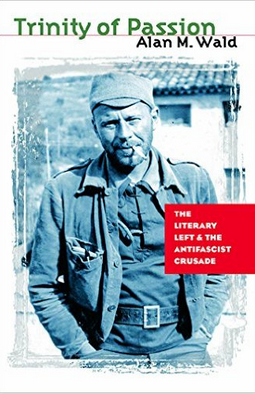
-
-
-
-
- Alan M. Wald’s Trinity of Passion: The Literary Left and the Antifascist Crusade. Chapel Hill: University of North Carolina Press, 2007, contains a chapter “Arthur Miller’s Missing Chapter” that considers Miller as a Marxist and his relationship to socialism.
- Leslie Goss Erickson’s Re-visioning of the Heroic Journey in Postmodern Literature : Toni Morrison, Julia Alvarez, Arthur Miller, and American Beauty. Lewiston, NY: Edwin Mellen, 2006, contains a chapter discussing Death of a Salesman.
- Ryder Jordan-Finnegan’s Individuation and the Power of Evil on the Nature of the Human Psyche: Studies in C.G. Jung, Arthur Miller, and Shakespeare. Lewiston, NY: Edwin Mellen, 2006, contains a discussion of After the Fall.
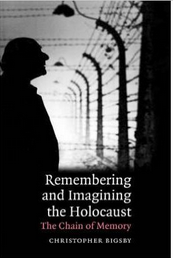
- Chris Bigsby’s Remembering and Imagining the Holocaust : The Chain of Memory. New York: Cambridge University Press, 2006, contains a chapter “Arthur Miller: The Rememberer.”
- Powers, Retha and Kathy Kiernan, eds. This Is My Best: Great Writers Share Their Favorite Work. San Francisco: Chronicle, 2005, contains extracts from Salesman in Beijing and Miller’s commentary on why he judges this to be his favorite writing. He states, “I can’t think of another work of mine that gave me as much pleasure in the writing as this one did,” explaining the reason largely being he had not been intentionally writing it for publication, but just to “keep the days from melting into one another incoherently” (324). He asserts that “in spirit” he feels this book contains some of his best work, in that it allows us to see his enthusiasm (324).
- Couple of recent introductory works: Amy Dunkleberger’s A Student’s Guide to Arthur Miller. Berkeley Heights, NJ : Enslow, 2005, and Richard Andersen’s Arthur Miller. New York: Marshall Cavendish Benchmark, 2005.
-
-
-